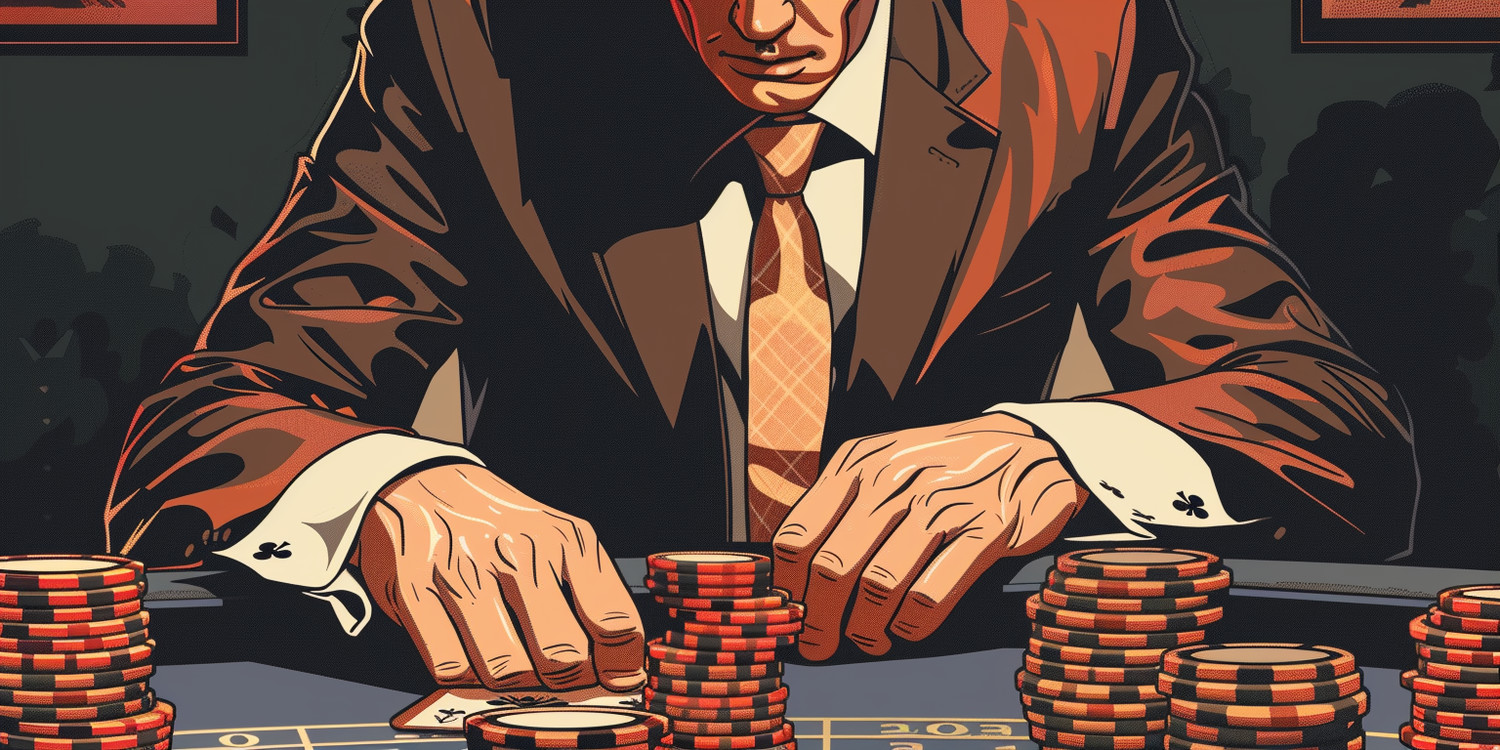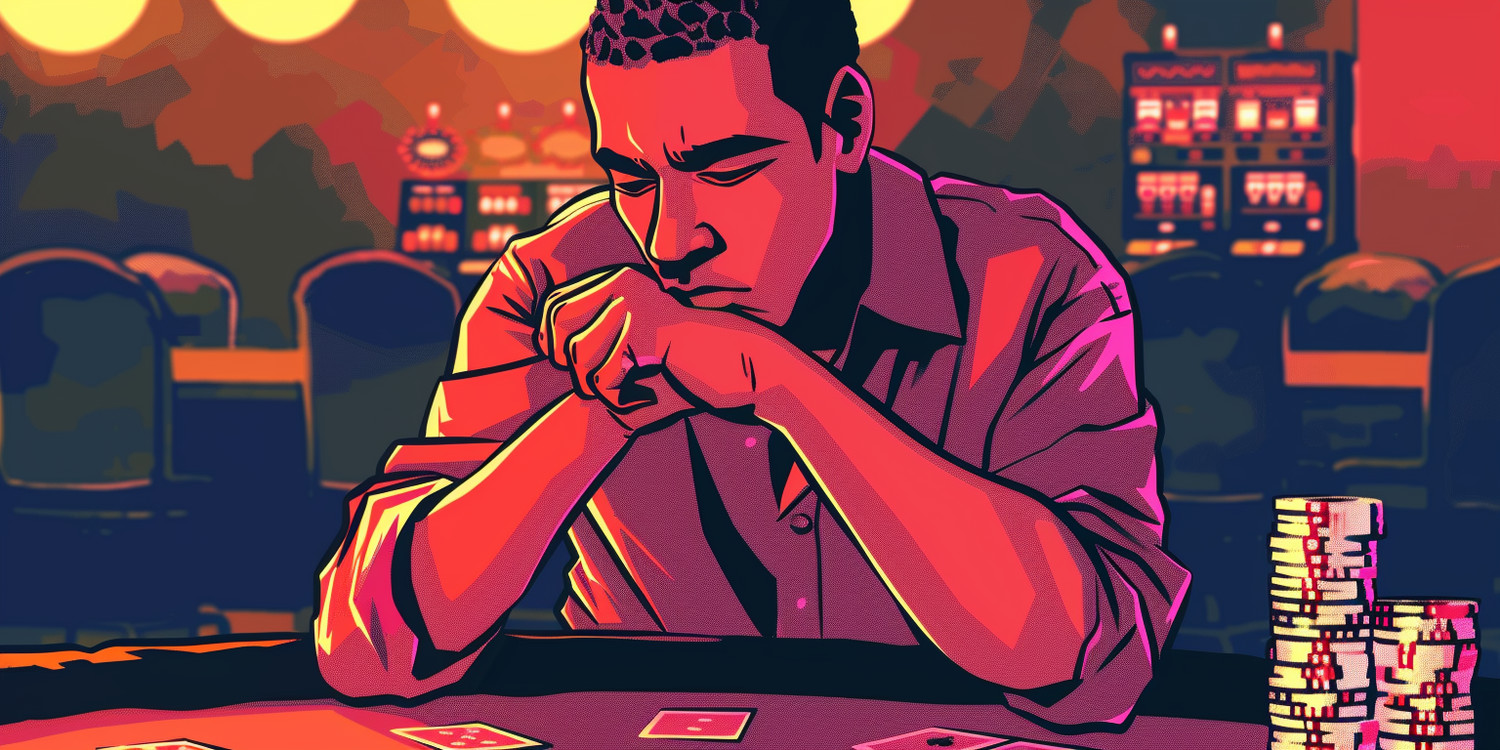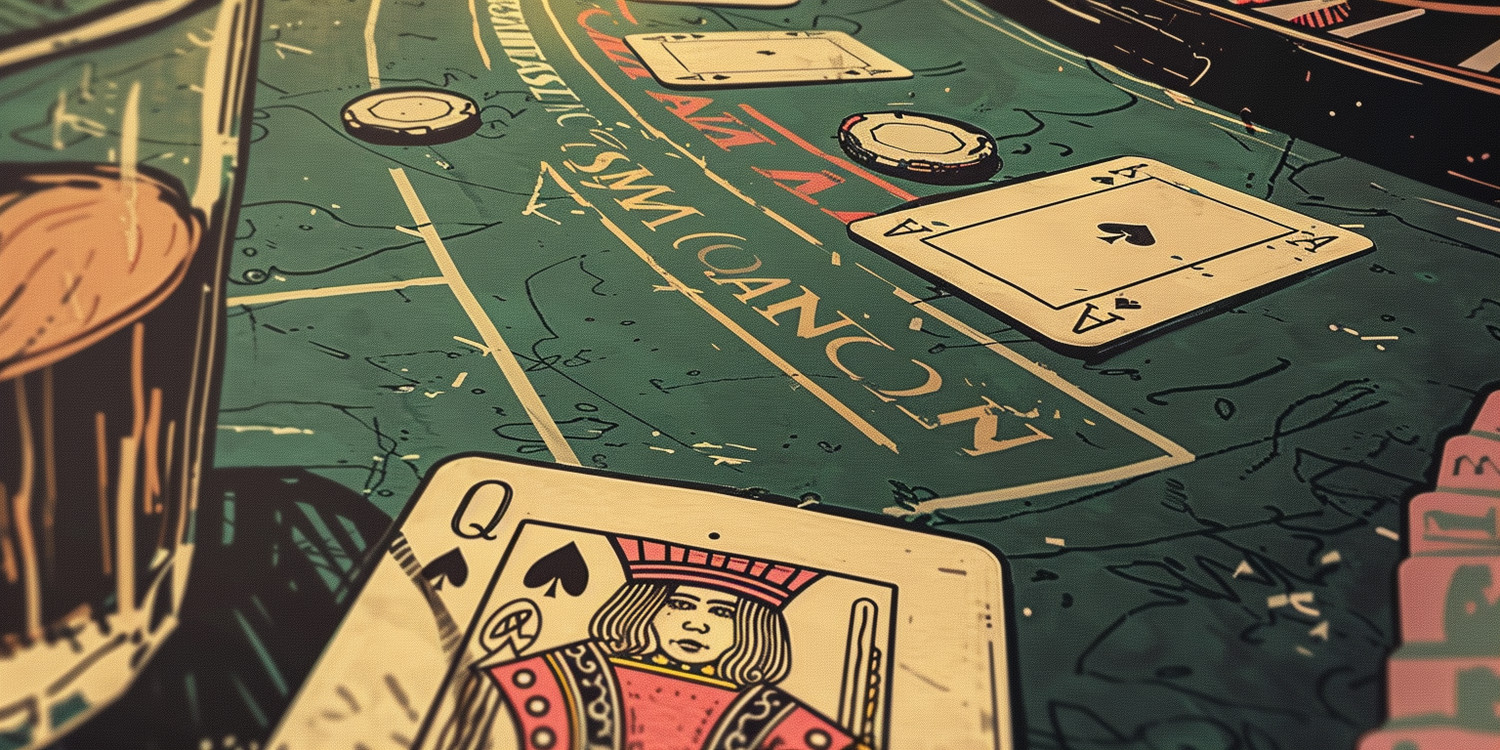
Blackjack insurance represents a side wager available to players when the dealer’s exposed card is an Ace. This option functions as a hedge against the possibility of the dealer possessing a Blackjack, offering a payout ratio typically set at 2:1.
Defining Blackjack Insurance: A Side Bet Explained
Blackjack insurance constitutes a supplementary wager, distinct from the primary game. Offered when the dealer’s up-card is an Ace, it essentially bets that the dealer holds a ten-value card, thus completing Blackjack. The insurance stake is capped at half the initial bet.
The Mechanics of Insurance in Blackjack
The insurance proposition in Blackjack arises under specific circumstances, predicated upon the dealer’s revealed card. When the dealer’s up-card is an Ace, players are presented with the option to procure insurance. This insurance functions as a discrete side bet, separate and independent from the player’s primary wager on the outcome of their hand against the dealer’s. The fundamental purpose of the insurance bet is to mitigate potential losses should the dealer possess a Blackjack, which is constituted by an Ace and a ten-value card (10, Jack, Queen, or King).
The amount a player can wager on the insurance bet is typically capped at one-half of their original stake. Should the player elect to take insurance, they place this additional wager. If the dealer subsequently reveals a ten-value card, thereby completing a Blackjack, the insurance bet pays out at a ratio of 2:1. This payout effectively compensates the player for the loss of their original bet, as the Blackjack results in the dealer winning the main hand. Conversely, if the dealer does not have a Blackjack, the insurance bet is lost, and the game proceeds as normal, with the player’s initial wager still in play.
It is crucial to recognize that the insurance bet operates independently of the player’s hand. The decision to take insurance should be based solely on the dealer’s up-card and an assessment of the likelihood of the dealer holding a ten-value card. The strength or weakness of the player’s own hand is irrelevant to the insurance proposition. The insurance bet is resolved immediately after the dealer reveals whether or not they have a Blackjack, irrespective of the subsequent play of the main hand.
The mechanics of insurance in Blackjack, therefore, involve a sequence of steps: (1) the dealer reveals an Ace as their up-card; (2) players are offered the option to take insurance; (3) players who elect to take insurance place a side bet equal to half of their original wager; (4) the dealer checks for Blackjack; (5) if the dealer has Blackjack, the insurance bet pays out at 2:1; (6) if the dealer does not have Blackjack, the insurance bet is lost; and (7) the game proceeds with the main hand. Understanding these mechanics is essential for players to make informed decisions regarding insurance.
Triggering the Insurance Option: Dealer’s Ace
The provision of the insurance option in Blackjack is exclusively contingent upon a specific condition: the dealer’s exposed card must be an Ace. This single criterion acts as the solitary trigger for offering players the opportunity to engage in the insurance side bet. Without the dealer displaying an Ace as their up-card, the insurance option remains unavailable. The rationale underpinning this condition resides in the heightened probability that the dealer possesses a Blackjack when an Ace is visible.
An Ace, by its inherent properties in Blackjack, holds a value of either 1 or 11, thereby significantly increasing the dealer’s chances of achieving a Blackjack in conjunction with a ten-value card. Consequently, the casino extends the insurance option to players, allowing them to hedge against this increased risk. The insurance bet, in essence, becomes a proposition concerning whether the dealer’s concealed card is a ten-value card, thereby completing the Blackjack.
The appearance of any other card as the dealer’s up-card, be it a number card (2 through 9) or a ten-value card (10, Jack, Queen, King), will not activate the insurance option. The exclusivity of the Ace as the trigger underscores the specific risk mitigation purpose of the insurance bet. It is designed to address the elevated probability of a dealer Blackjack when an Ace is present.
Therefore, players should be acutely aware that the insurance option is not a universally available choice in Blackjack. It is a conditional offering, exclusively presented when the dealer’s up-card is an Ace. This understanding is paramount for making informed decisions regarding whether to accept or decline the insurance proposition, based on an assessment of the prevailing circumstances and the potential risks involved. The dealer’s Ace is the key that unlocks the insurance possibility.
Insurance Bet Amount and Payout Ratio: 2:1

The insurance bet in Blackjack is characterized by a specific wagering limit and a predetermined payout structure. The amount a player is permitted to wager on the insurance bet is typically capped at one-half (50%) of their original, initial bet placed on the main Blackjack hand. This limitation ensures that the insurance bet remains a supplementary wager, rather than an attempt to fully negate the potential loss of the primary bet. The amount staked on insurance is strategically linked to the initial wager, providing a proportional hedge against the dealer’s potential Blackjack.
The payout ratio for a successful insurance bet is universally established at 2:1. This signifies that if the dealer subsequently reveals a ten-value card, thereby completing a Blackjack, the player receives a payout equal to twice the amount of their insurance wager. For instance, if a player’s original bet was $100, their maximum insurance bet would be $50. If the dealer has Blackjack, the insurance bet pays out $100 (2 x $50).
This 2:1 payout ratio is a crucial element in evaluating the overall attractiveness of the insurance bet. While it provides a degree of compensation for the loss of the original wager, it is essential to consider the probability of the dealer actually having a Blackjack. The house edge associated with the insurance bet stems from the fact that the true odds of the dealer having a ten-value card are less than 1 in 3, making the 2:1 payout less favorable in the long run.
Therefore, understanding the insurance bet amount limitation (half the original bet) and the fixed payout ratio (2:1) is paramount for players to assess the risk-reward profile of this side wager. This knowledge, coupled with an awareness of the underlying probabilities, enables players to make informed decisions regarding whether to take insurance when offered.
The Impact of Insurance on the Main Bet
Insurance directly influences the outcome of the primary Blackjack wager. If the dealer reveals Blackjack, the main bet typically pushes, resulting in no win or loss. The insurance payout, at 2:1, compensates for this. Without insurance, a dealer Blackjack results in a lost main bet.
The House Edge and Insurance
The house edge represents a fundamental concept in gambling, reflecting the inherent statistical advantage that the casino possesses over players in any given game. In Blackjack, the house edge varies depending on the specific rules of the game and the player’s strategy. However, the insurance bet significantly alters the overall house edge, typically to the detriment of the player. Understanding the house edge associated with insurance is crucial for informed decision-making.
The house edge on the insurance bet is substantially higher than the house edge in the main Blackjack game when played using basic strategy. While the main game, with optimal play, can offer a relatively low house edge (often below 1%), the insurance bet typically carries a house edge ranging from approximately 5.8% in single-deck variants to considerably higher percentages in multi-deck games. This disparity arises from the fact that the payout odds of 2:1 on the insurance bet do not accurately reflect the true probability of the dealer having a Blackjack.
The probability of the dealer having a ten-value card to complete a Blackjack is less than one-third, while the insurance bet only pays out if the dealer actually has Blackjack. This difference creates the house advantage. The more decks used in the game, the lower the probability of the dealer having a ten-value card because the ratio of ten-value cards to other cards decreases slightly as more decks are added.
Therefore, players should be wary of the insurance bet due to its unfavorable house edge. While it may seem appealing as a way to protect against a dealer Blackjack, the mathematics demonstrate that, in the long run, it is a losing proposition. A solid understanding of Blackjack strategy and the implications of the house edge on insurance is essential for responsible gambling.
House Edge on the Insurance Bet vs. Main Game
A critical distinction exists between the house edge associated with the insurance bet and the house edge inherent in the main Blackjack game. The house edge, representing the casino’s statistical advantage, quantifies the percentage of each bet that the casino expects to retain over the long run. Understanding this disparity is paramount for players aiming to make informed decisions.
In the main Blackjack game, employing a basic strategy that dictates optimal decisions for each hand based on the player’s cards and the dealer’s up-card, the house edge can be remarkably low, frequently falling below 1%. This favorable house edge is achievable through disciplined adherence to the established principles of basic strategy, which minimizes errors and maximizes the player’s chances of success.
Conversely, the insurance bet presents a significantly less advantageous proposition. The house edge on the insurance bet is substantially higher than that of the main game, typically ranging from approximately 5.8% in single-deck Blackjack to potentially exceeding 8% or even higher in multi-deck variations. This pronounced increase in the house edge renders the insurance bet a comparatively unfavorable wager for players.
The underlying reason for this disparity stems from the discrepancy between the payout odds of 2:1 offered on the insurance bet and the actual probability of the dealer possessing a Blackjack. Given that the true odds of the dealer holding a ten-value card are less than 1 in 3, the 2:1 payout fails to adequately compensate for the risk involved, thereby creating a statistical advantage for the casino. Players should be acutely aware of this difference.
Why Insurance is Generally Considered a Bad Bet

Insurance is generally disfavored due to its high house edge compared to the main Blackjack game. The 2:1 payout doesn’t reflect the true odds of the dealer having Blackjack. Basic strategy advises against taking insurance, as it statistically reduces long-term profitability.
Strategic Considerations for Insurance
While the prevailing wisdom in Blackjack often advises against taking insurance, a comprehensive understanding of strategic considerations is essential for making informed decisions. The decision to take or decline insurance should not be arbitrary but rather based on a careful evaluation of factors such as basic strategy, card counting (in specific contexts), and a realistic assessment of the odds. While insurance generally carries a negative expectation, certain scenarios might warrant a deviation from the standard recommendation.
Basic Blackjack strategy, meticulously crafted through mathematical analysis and simulations, consistently demonstrates that insurance is, in most circumstances, a negative expectation bet. Adhering to basic strategy entails declining insurance whenever it is offered. This recommendation stems from the fact that the house edge associated with insurance is significantly higher than the house edge in the main game, making it a losing proposition in the long run.
However, card counting, an advanced technique employed by skilled players to track the ratio of high-value cards to low-value cards remaining in the deck, can potentially alter the equation. In situations where the count is significantly positive, indicating a disproportionately high concentration of ten-value cards, the probability of the dealer having a Blackjack increases, making insurance a potentially advantageous bet. However, it’s crucial to recognize that card counting is a complex skill and is not always feasible.
Furthermore, it is important to avoid falling prey to the gambler’s fallacy, the erroneous belief that past events influence future outcomes in random events. The fact that the dealer has not had a Blackjack in several hands does not increase the likelihood of them having one in the next hand. Each hand is independent, and the odds remain the same. A considered approach is vital.
Basic Blackjack Strategy and Insurance: A Negative Expectation
Basic Blackjack strategy, a cornerstone of informed gameplay, provides a set of mathematically derived guidelines for optimal decision-making in various scenarios. This strategy, developed through extensive simulations and probabilistic analysis, aims to minimize the house edge and maximize the player’s chances of success. A fundamental tenet of basic strategy is the near-universal recommendation to decline insurance whenever it is offered. This stance is predicated on the understanding that, under most circumstances, insurance presents a negative expectation bet.
A negative expectation bet implies that, over the long run, the player is statistically likely to lose money on that particular wager. The house edge associated with insurance, which is significantly higher than the house edge in the main Blackjack game, contributes to this negative expectation. The payout odds of 2:1 on the insurance bet do not adequately compensate for the true probability of the dealer having a Blackjack.
While the allure of potentially recouping losses from the main bet may tempt players to take insurance, basic strategy dictates that this decision is rarely, if ever, mathematically sound. The long-term consequences of consistently accepting insurance outweigh any perceived short-term benefits. Sticking to basic strategy and declining insurance is generally the most prudent approach for preserving capital and minimizing losses.
Therefore, players adhering to basic Blackjack strategy should view insurance as a deviation from optimal play. While exceptional circumstances may exist, the vast majority of situations warrant a firm rejection of the insurance proposition. The core principle of basic strategy is to make decisions based on long-term mathematical probabilities, and insurance typically fails to align with this objective.
Card Counting and Insurance: When it Might Be Advantageous
Card counting, a sophisticated technique employed by skilled Blackjack players, involves tracking the ratio of high-value cards (tens, Jacks, Queens, Kings, and Aces) to low-value cards (2 through 6) remaining in the deck. This information allows players to make more informed decisions about betting and playing their hands, potentially shifting the odds in their favor. While basic strategy generally advises against taking insurance, card counting can create specific scenarios where insurance becomes an advantageous bet.
When the count is significantly positive, indicating a disproportionately high concentration of ten-value cards remaining in the deck, the probability of the dealer having a Blackjack increases substantially. In such situations, the 2:1 payout on the insurance bet may actually exceed the expected value, making it a profitable wager. However, determining the precise count at which insurance becomes advantageous requires a deep understanding of card counting techniques and meticulous tracking of the cards.
A perfect insurance count would start with a count of -4, for example. The decision to take insurance based on card counting should not be arbitrary. It should be grounded in a precise assessment of the count and a calculation of the expected value of the insurance bet. Without accurate card counting skills, attempting to use insurance strategically is likely to be detrimental.
Therefore, while basic strategy typically discourages insurance, skilled card counters can identify specific situations where it becomes a valuable tool. It is crucial to remember that card counting is a complex skill that requires extensive practice and dedication. It is not a foolproof method, and casinos often employ countermeasures to detect and deter card counters.
Situational Exceptions: Misinformation and Gambler’s Fallacy

While basic Blackjack strategy and, in some cases, card counting, provide a solid framework for decision-making, it’s crucial to recognize the potential pitfalls of misinformation and the gambler’s fallacy. These cognitive biases can lead to suboptimal choices, particularly concerning insurance. Misinformation, often stemming from anecdotal evidence or flawed reasoning, can distort a player’s perception of the odds. The gambler’s fallacy, on the other hand, involves the mistaken belief that past events influence future outcomes in random events.
Misinformation regarding insurance can manifest in various forms. For instance, some players may believe that taking insurance is always a good idea when they have a weak hand, assuming it will protect them from a dealer Blackjack. However, the strength of the player’s hand is irrelevant to the insurance bet; the decision should be based solely on the probability of the dealer having a ten-value card.
The gambler’s fallacy can also lead to misguided decisions. For example, a player might reason that because the dealer has not had a Blackjack in several hands, they are “due” for one, making insurance a worthwhile bet. However, each hand is independent, and the probability of the dealer having a Blackjack remains constant regardless of previous outcomes. The simplicity of the game is what makes these fallacies so difficult to overcome.
Therefore, players should be wary of both misinformation and the gambler’s fallacy. Relying on accurate information, adhering to basic strategy, and avoiding cognitive biases are essential for making sound decisions regarding insurance. The best blackjack strategy for insurance is simply to always say no.

